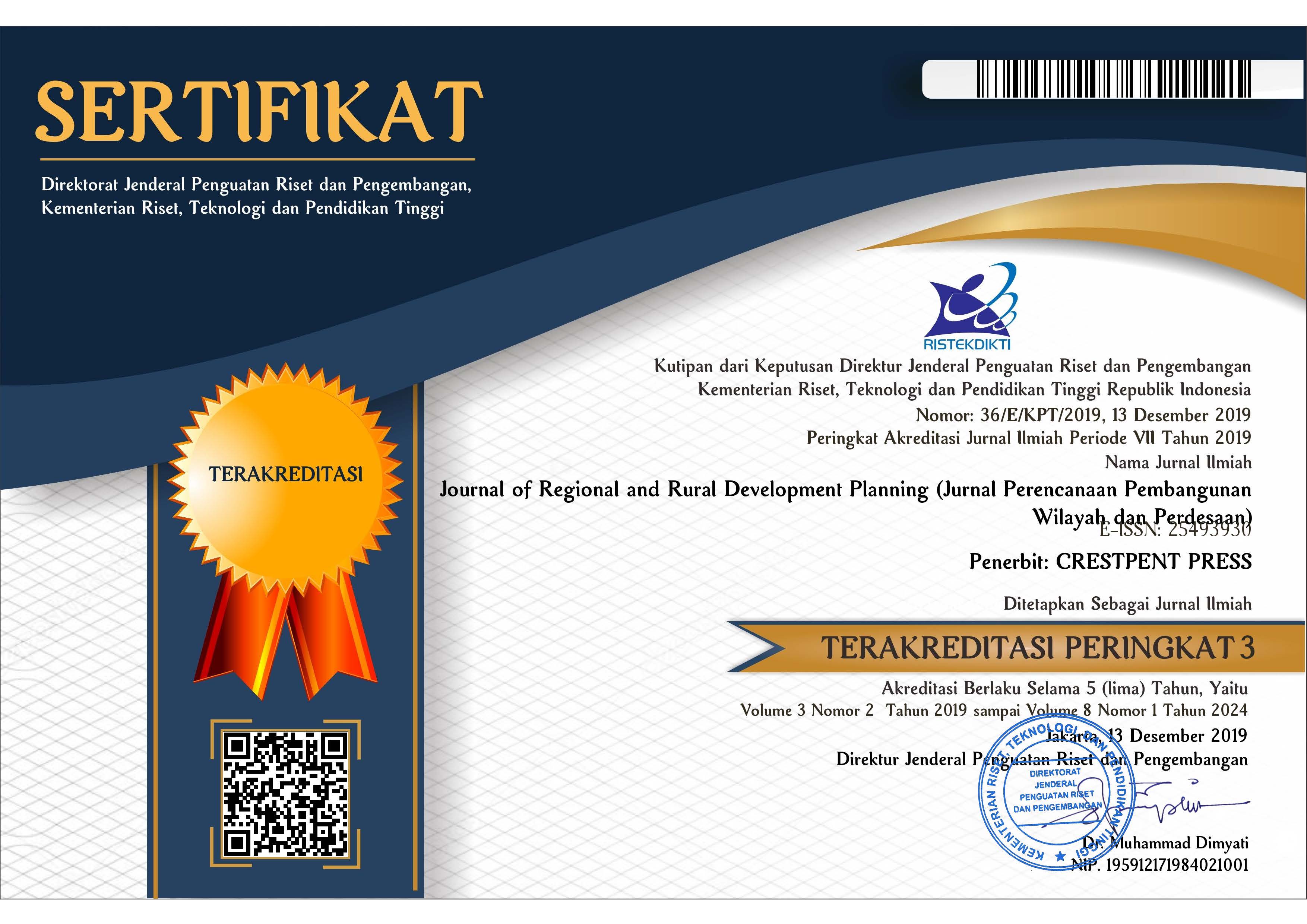Analisis Disparitas dan Interaksi Spasial di Timor-Leste
Abstract
Spatial planning is a tool to achieve braden goals of development. To support economic development in Timor Leste, it needs an optimal spatial structure planning that supports connectivities between districts through infrastructures network. This research aimed to analyze and explain disparities, interaction and optimal regional spatial structure using variables of infrastructures and public facilities on national and regional/districts/subnational activities center. This research used Scalogram and gravitation modelling analysis. The results showed that there is a high disparity level between districts in Timor-Leste that caused by the lack of public facilities and lack of access to public services. Moreover, the spatial structure interaction between districts are very weak. To cope with those problems, this research suggested the formulation of one national activity center located in the north (Dili) and three Regional (subnational) Activity Center (RAC) located at Ermera in the west, Baucau in the east and Manufahi in the south of Timor-LesteCopyright (c) 2017 Journal of Regional and Rural Development Planning

This work is licensed under a Creative Commons Attribution-ShareAlike 4.0 International License.




.png)














